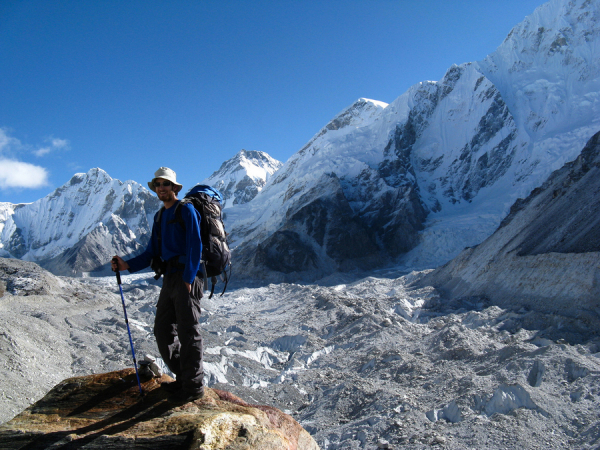Ignore the myths and just get to Nepal

With so many people around the world keen to experience the wonders of Nepal, the multitude of myths about the country that keep others away is perhaps a blessing.
But be smart, advise trip guide Traveloka: “Avoid the myths and just go. You will love it!”
Here are some of the myths about Nepal that need shattering.
Nepal is too dangerous for trekking
Only a few groups handle trekking (or “mountaineering”) in Nepal. The two most popular treks – Everest Base Camp and the Jomsom Trek, both in eastern Nepal, are not really mountaineering expeditions in the usual sense but more aptly described as “teahouse treks”.
On the trek from Pokhara to Jomsom, a four- to five-day trip, you “hike” (a walk in the park compared to a real trek). You don’t really exert yourself. You can rest at numerous outposts between villages, enjoy delicious home cooking and relax with other travellers and at countless guesthouses.
One couple “trekking” near Ghorapani, north of Pokhara, hired a team of guides to escort them on the same hike.
.jpg?x-image-process=style/lg-webp)
The Maoist insurgency
The Maoist insurgency actually ended in 2006. It was a decade-long tragedy in which thousands were killed, but even during that time, the direct impact on the safety and security of travellers in cities and the countryside was marginal.
If a hiker met a Maoist guerrilla during this period, it would involve not weapons or violence but a “thank-you” cash demand, usually around Bt300, for which an actual receipt would be offered. The peace deal was signed and the war ended 13 years ago.
.jpg?x-image-process=style/lg-webp)
Nepal is too risky for women
Actually, women of all ages, nationalities and ethnicities are welcomed and treated respectfully and compassionately. This equally applies to solo female travellers.
Nepalese are inherently soft-spoken, modest, gentle and very receptive to diversity in numbers, regardless of your faith or country of origin. They treat all people as equals without any prejudice or disdain.
Travellers to Nepal are welcomed as visitors – in homes, villages, mountain passes, day and night – and even around-the-clock in the larger, more densely populated urban areas.
Nepal is dirty and unhygienic
Nepal is undeveloped as measured by GDP per capita and among the poorest countries in South Asia. However, it has taken huge and important steps in its development over the years with thousands lifted out of poverty in the process.
Clean bottled water is readily available everywhere and food storage, refrigeration and preparation standards have greatly improved.
The number and geographic spread of higher-class health facilities are improving. Perhaps the most common illness encountered by tourists is among those who aspire to climb too high, too fast.
For first-time travellers to Nepal, it’s important to know about acclimatisation, which is a process of slowly adjusting your body and reduced oxygen flows to your brain at high altitudes. Acute mountain sickness (AMS) can set in above 2,500 metres.
Your body can adapt, or acclimatise, but too often impatient travellers-trekkers just don’t get it. Remember, a gradual approach is best. AMS has nothing to with cleanliness or hygiene or land or seaborne diseases. It is sadly all about the impatience of so many travellers to achieve too much too quickly. Go slow and stay healthy if you do decide to climb above these heights.
.jpg?x-image-process=style/lg-webp)
The shopping is terrible
Nepal is not home to heavy industry or high-end luxury goods. Buyers in the market for premium cars or chic, brand-name clothing, handbags or perfumes should probably give this agrarian country a miss. The same would apply to your last-minute opportunity at airport duty-free shops, which are no match for those in developed countries around the world. People who spend US$100,000 in Nepal are probably not shopping but joining an excursion to ascend Mount Everest – yes, that is the going rate.
And yet, Nepal is a different shopper’s paradise even among those who never thought of buying a thing there in advance of the trip.
The emphasis with most purchases of choice is clearly not AI-supported machine output or 4.0 technologies and systems, but rather cottage industries that consistently showcase handmade work that is stunningly beautiful, durable and refined.
Some of the finest Pashimina shawls and scarves in Asia are made by hundreds of skilled designers in Nepal. Richly textured, rainbow-coloured paper dolls and masks, stone and bead jewellery remain immensely popular among shoppers. Locally produced coffees, teas and exotics spices are found in most restaurants and cafes and consistently rank among Nepal’s highest export earners.
So, while few travellers would say without teasing that they went to Nepal “to shop”, most would pick up some of these and many other treasures for themselves or as very well-received gifts.
“For anyone travelling in Asia, we would certainly recommend exploring the many wonders of Nepal – all so easily accessible for outdoors lovers of all ages and physical well-being,” says Tee Chayakul, Traveloka’s country manager for Thailand.
“You don’t have to take even one step to see and feel at close range the stunning immensity and splendour of the Himalayas. The unrivalled scenery, eager and welcome hosts, rich cultural heritage and passively inviting religions and cuisines all prove winners in tourist diaries. There are very few one-time-only visitors to Nepal, and with good reason.
“Nepal is an under-the-radar location for most Thais despite its close proximity – just three hours and 20 minutes – so it’s ripe for discovery. And nothing is better than going to a new destination with hardly any expectations and coming away hugely impressed. Thais will be pleased to discover the warmth and friendliness of the Nepalese people in addition to the many temples, shrines, great food and of course the stunning natural beauty.”
Check out www.traveloka.com/en-my.
